PRESERVING A MILITARY LEGACY FOR FUTURE GENERATIONS
The following Reflections represents CAPT Dennis Wright’s legacy of his military service from 1965 to 1998. If you are a Veteran, consider preserving a record of your own military service, including your memories and photographs, on Togetherweserved.com (TWS), the leading archive of living military history. The following Service Reflections is an easy-to-complete self-interview, located on your TWS Military Service Page, which enables you to remember key people and events from your military service and the impact they made on your life. Start recording your own Military Memories HERE.
Please describe who or what influenced your decision to join the Navy.
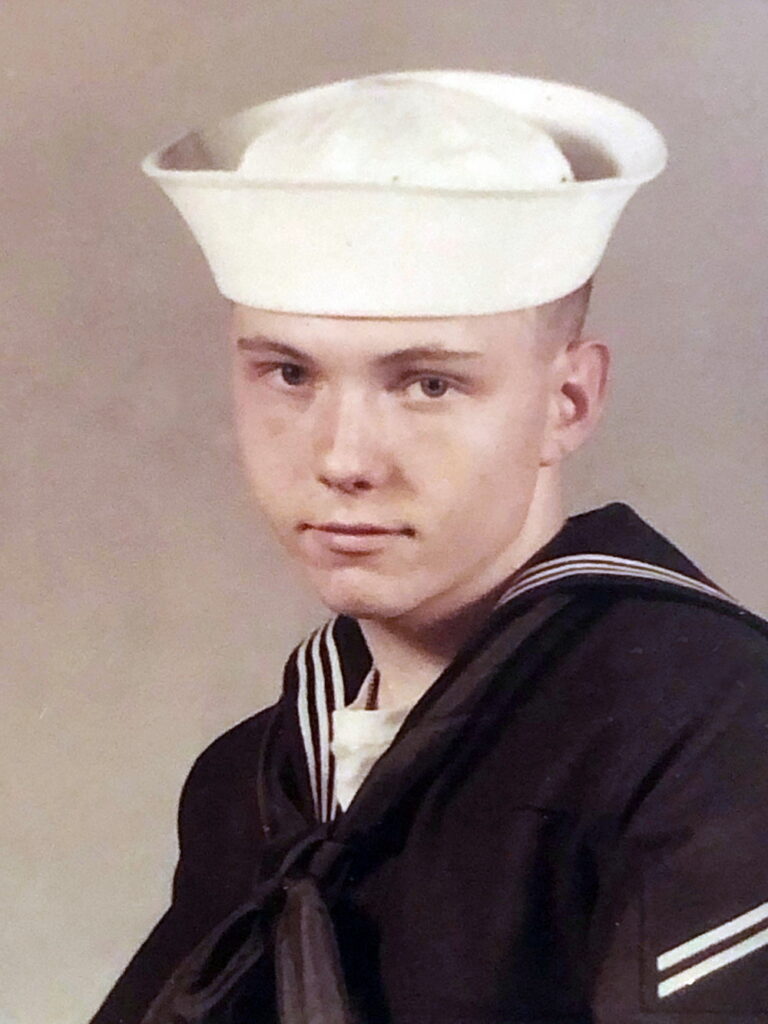
I joined the Navy after high school in late December 1965, just as the draft was ramping up for the big Vietnam buildup. I stopped by the Air Force recruiters, but they did not have any slots until the springtime in 1966, which would be well after my draft number was called. I then visited the Navy recruiter, who told me the same thing – – with one big caveat. He had a few slots open for immediate entry. Like now! But I would have to make an immediate commitment. That afternoon, I met with one of my best friends, Bob Orta, who was in the same predicament. Because we were both apprehensive about joining the Navy and what it might entail, we thought if we joined together under the Navy’s “Buddy Program,” it would be less stressful. So Bob and I returned to the Navy recruiter and signed up with an entry date of December 30, 1965. So, on early Thursday morning, December 30, the day before New Year’s Eve, we boarded a train in Aurora, Illinois, for the short one-hour ride to the downtown Chicago Navy Induction Center. We spent the rest of the day being poked and prodded and then boarded a bus in the early evening for Recruit Training Command Great Lakes. Smack dab in the middle of winter. Incidentally, so much for the Buddy Program, Bob and I were separated in our second week. Bob had trouble passing the survival swim testing and was held back for weeks. We will never serve together again.
Whether you were in the service for several years or as a career, please describe the direction or path you took. What was your reason for leaving?
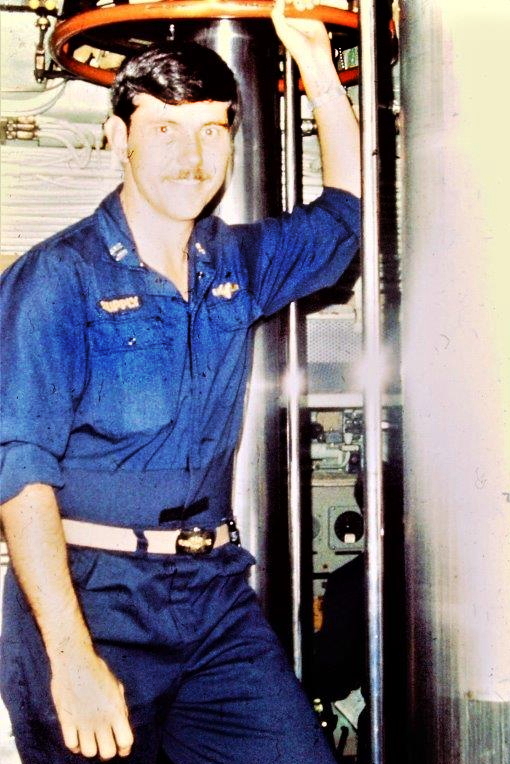
I arrived with one of my best friends, Bob Orta, at Great Lakes on Thursday evening, December 30, 1965. Recruits were arriving from all over the country who would form the first four companies of calendar year 1966 to be trained. Bob and I were both assigned to Company 004. Our Company Commander was Ship Serviceman First Class, T. R. Porterfield. We had enlisted under the Navy’s “Buddy Program”. Purportedly, we were to spend our time in boot camp together and even get assigned to our first duty station together. Unfortunately, that did not last long, as in the second week, Bob failed to pass the survival swimming test and was pushed back a couple of weeks. That was the last time we would be together in a naval uniform.
I worked part-time in two grocery stores, Jewel Tea and National Tea companies during high school. After graduation, I decided to work full-time at the National Tea grocery store as I knew my draft number would be coming up, and I enjoyed what I was doing with two great bosses, Erv Heiman and Helmut Mueller. They promised me my job back after completing my four-year enlistment. Boot camp at Great Lakes, just off the shore of Lake Michigan, in the middle of winter, is a brutally cold place to be, especially when they would get us up in the middle of the night to guard the large Demster-Dumpster trash receptacles or shovel snow off the streets. Yes, the streets. Using “boots” to shovel the streets was cheaper than using snow plows, and someone must have thought it would help build character. Based on that experience, and I suppose Navy aptitude tests, I was designated to become a Storekeeper. On February 24, 1966, I graduated. I first received orders from Storekeeper “A” School in Newport, Rhode Island.
When I entered the Navy, I had no plans other than to serve my time and then return to Aurora, Illinois, and my old job at National Tea after completing my four-year enlistment. I didn’t mind all the petty hardships and annoying things they had us doing in boot camp. My only objective at the time was to do precisely what I was told, stay out of trouble, and do a good job, better than what others could do, in whatever I was assigned or told to do. Even if that meant shoveling snow off the streets or guarding a trash receptacle, that formula has served me well throughout my entire life.
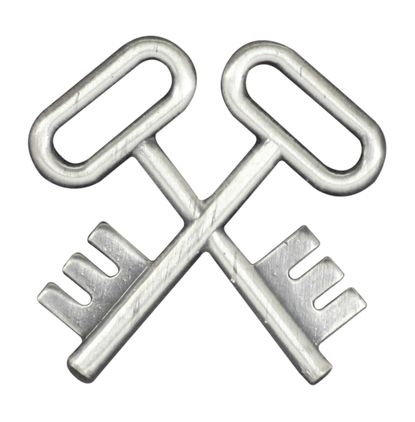
After graduation from boot camp, I had ten days of home leave before flying to Newport, RI, for Storekeeper Class “A” (SK “A”) school. I graduated on May 20, 1966, as the Class Honor Man – – number 1 of 51 students. At that time, there were no promotion incentives, so like the other 50 students, I became a “Designated Striker,” a new Storekeeper Seaman Apprentice (SKSA). At the time, all Storekeeper graduates were being sent to the warehouses in Vietnam or ships, so surely that was where my class would be assigned. Wrong. Because many of the previous classes did go to the Vietnam or afloat billets, the Navy had neglected the other CONUS billets. Hence, everyone in my class was assigned to U.S. shore billets. My first set of orders was to report to the Navy Transportation Coordinating Office (NAVTRANSCO) at the Naval Air Station in Alameda, CA. NAVTRANSCO was a mobile transportation command; however, during my tour, we never mobilized.
I reported aboard NAVTRANSCO on June 14. NAVTRANSCO was located on the 2nd floor of Building 77, the NAS Alameda Air Terminal building. I was the low man on the totem pole in an office of 50 civil servants and 25 military. Because of the Vietnam build-up, the Navy had placed waivers on Time-in-Service (TIS) and Time-in-Rate (TIR) requirements. So, during this first tour, I rapidly advanced from E-2 to E-5. I had an outstanding Leading Chief Petty Officer, SKC Potter, and two wonderful U.S. Navy Supply Corps Officers-in-Charge (OICs), Commanders Clyde D. Killion and Ernie. F. Johnson. During this tour of duty, I learned about the Navy’s Navy Enlisted Scientific Education Program (NESEP). The NESEP program was a highly competitive enlisted-to-officer program open to E-5s and above. I had great performance evaluations, was promoted to E-5, and took a night school course to enhance my high school grades. I applied and was accepted thanks to a powerful recommendation from CDR Johnson, my performance evaluations, and my extracurricular classes. I was most fortunate to be one of 545 white hats selected that year from some 5,000 applicants, most of whom were “nukes” or “airdales” from the Navy’s technical ratings. Few from the administrative ratings seemed to make the cut.
The Navy had the foresight to send all NESEP candidates to NESEP Preparatory School in either San Diego or Bainbridge, MD. I was assigned to attend school in San Diego. Prep school was designed to reacquaint the sailors with an academic environment and weed out those who might then realize they were not quite ready for academics. Especially since all NESEPs had to commit to a six-year extension to their enlistment contracts. During college, we would remain on active duty in our present rank and be entitled to take the advancement exams. However, it was also imperative that we maintain a certain grade point average, as dropping out of the program would mean returning to the fleet as a White Hat.

As we neared the end of Prep School and graduation, each student could select one of 22 colleges to attend. I chose the University of Nebraska largely because there was a U.S. Air Force base in Lincoln, and I figured we could use the commissary and exchange as well as obtain family housing. That turned out to be a bad assumption as that same year, DOD closed the Lincoln AFB. On the plus side, however, the General Services Administration took over the family housing area, and NESEPs were allowed and authorized to live in the Air Base Housing area in exchange for the family housing allowance. So, it still turned out to be a good idea. Especially since the Nebraska football team would go on and win two back-to-back national championships while I was there. On May 19, 1972, I graduated with Honors earning a Bachelors Degree in Mechanical Engineering. Later that same day, along with a dozen other NESEPs, I received a commission as an Ensign in the Unrestricted Line (1100 designation).
My first commissioned tour was to the old WWII Tin Can, the USS Eversole (DD-789). En route to the ship, I was sent to the Fleet Training Center, Naval Station San Diego, for Weapons and 5″/38 Naval Gunfire Training. I was assigned as the First Lieutenant responsible for the Deck Division and all the ship’s Boatswain Mates with a General Quarters (GQ) assignment as the Gunnery Liaison Officer. Eversole, at the time, was deployed off the coast of Vietnam, providing gunfire support missions. In mid-July, I arrived at the Subic Bay Naval Station in the Philippines for my onward movement to the ship. I was then directed to report to the fleet Oiler USS Hassyampa (AO-145). Hassyampa was in port and scheduled to depart to refuel the fleet. Two days later, on July 20, 1972, I was transferred from Hassyampa to Eversole via a manila high-line transfer in a Bosun’s Chair, a most unusual way to report aboard your first ship. During my tour on Eversole, I would go on to become a qualified Officer of the Deck (OOD) for both Independent and Fleet steaming as well as Command Duty Officer (CDO), the only Ensign the Captain qualified. Eversole would go on to fire 17,060 5″-38 caliber rounds.
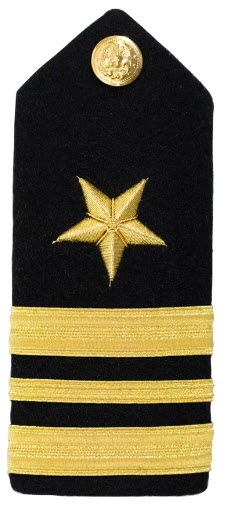
In 1973, the Navy sold Eversole to the Turkish government. This necessitated transferring all the crew members to other duty stations. I used this opportunity to request a transfer to the U.S. Navy Supply Corps, given my prior experience, history, and knowledge as a Storekeeper. The Navy accepted my transfer request and sent me to the 6-month U.S. Navy Supply Corps School in Athens, Georgia. Upon graduation, I selected independent duty afloat as a Supply Officer aboard a submarine. I was accepted and assigned to the USS George Bancroft (SSBN-643) Gold Crew. Bancroft operated out of Rota, Spain, with off-crew offices in Charleston, South Carolina. I made five FBM Deterrent Patrols and qualified in Submarines as both Diving Officer of the Watch and Officer of the Deck (OOD).
In January 1977, I reported aboard the Ships Parts Control Center (SPCC) in Mechanicsburg, PA, where I served as the Flag Aide to Rear Admirals Jim McKenna and Tom Allshouse in addition to being dual-hatted as the Heads of the Program Management Branch, Ships Division (Code 521) and the Data Control Division (Code 560). By 1979, just 14 years after enlisting, I had earned a college degree and transitioned from E-5 to O-3. I completed four incredible tours of duty, including serving on one old WWII Tin-Can operating off the coast of Vietnam and one of the Navy’s most modern and sophisticated FBM Missile submarines and two incredible shore assignments.
In June of 1979, I was once again in an academic environment. I was now enrolled at the Naval Postgraduate School in Monterey, California, to earn a Master’s Degree. At Monterey, I was also promoted to Lieutenant Commander (LCDR), one year ahead of my peers. I was then ordered to do my first OCONUS duty assignment at the Naval Supply Depot (NSD) in Yokosuka, Japan. In 1983, I left NSD Yokosuka for my third ship, the USS Midway (CV-41), where I was assigned as the Assistant Supply Officer. During Midway’s Indian Ocean Deployment to Gonzo Station in 1984, the skipper, Captain Chuck McGrail, decided he wanted me to be the Officer-in-Charge of the Task Force 70 Detachment in Diego Garcia, a position normally filled by one of the ship’s Line Officers. I remained in Diego Garcia for the three and a half months Midway supporting the battle group deployed to Gonzo Station.
Late in 1984, I returned to the States for a follow-on assignment supporting Naval Aviation. I was at the Aviation Supply Office (ASO) in Philadelphia, PA, this time and was promoted to Commander (CDR). I then continued down the aviation logistics path to the Naval Air Station (NAS) Lemoore, CA, home of the Navy’s Light Attack community, flying the F/A-18. I was dual-hatted as the NAS Supply Officer and the Commander Light Attack Wing Pacific (COMLATWINGPAC) Supply Officer. The jobs on Midway and at ASO and Lemoore groomed me for my fourth sea-duty assignment and my fourth consecutive tour supporting the aviation community. This time, as the Supply Officer of USS Abraham Lincoln (CVN-72), the Navy’s newest aircraft carrier at the time. I was fortunate to have been the Supply Officer to take it on its maiden voyage “around the Horn” from its outfitting home in Norfolk, VA, to our new home port, NAS Alameda, CA. This was my second tour to Alameda, having started my career there 24 years earlier. It was somewhat ironic I departed Alameda in 1968 as an E-5 and returned as an O-5. Lincoln then made its first operational deployment to the Indian Ocean on the heels of Desert Storm. During this deployment in 1991, Mount Pinatubo erupted the day before our scheduled port call to top off supplies before proceeding into the Indian Ocean. After flying off the air wing, Lincoln proceeded into Subic once all the volcanic ash and volcano had settled to support Operation Fiery Vigil. The evacuation of 4,500 USAF personnel and dependents whose homes were totally demolished at the former Clark Air Force Base. Lincoln made two trips from Subic Bay, Philippines, to Cebu, Philippines, so that these refugees could continue their onward journeys to the States. I was also promoted to Captain (CAPT) a few months before departing Lincoln.
In the summer of 1992, I was detailed to my first 0-6 assignment as the Head of Contracts at the Naval Air Warfare Center, Training Systems Division (NAWC-TSD), Orlando, FL, a subordinate command to the Naval Air Systems Command. I was given unlimited Contracting Authority for the acquisition of all U.S. Navy and U.S. Army simulators and training devices. It was my first major “payback” assignment after earning my 1306 Acquisition Management designator from the Naval Postgraduate School in Monterey. Following the contracts tour in Orlando, I was assigned to my second “Contracts” job and my first “Command” tour at the Defense Contract Management District International (DCMDI) at the Gentile U.S. Air Force base in Dayton, OH. After one year in Ohio, the DOD elected to move my command from Dayton to Fort Belvoir, VA.

I retired on September 30, 1998, three months shy of serving 33 years in the Navy. The Navy shaped my life and career. And I am a better man for it. My family could not afford to send me to college when I graduated from high school. I had not given much thought to a life outside of my hometown of Aurora, IL. After all, no one in my larger collective family, including all of my aunts, uncles, and cousins, had ever gone to college. We were definitely a blue-collar, working-class family out of the Heartland of America. Because President Johnson had ramped up the number of men being drafted, and because I had received my draft number, I decided I needed to enlist. I figured I would go on to serve my four years in the Navy and return to work in a grocery store and hang out with my family and friends. But destiny had other plans because of world events and, to some extent, perhaps fate. I was blessed to have gotten off to a good start in the Navy. I worked hard, maintained a positive attitude, and applied myself to doing a good job on anything assigned. It seemed to be the right formula for success. One event led to another, and it just kept getting better. I had a remarkable career and have much to be thankful to the Navy for. It was through the Navy that I earned a Bachelor’s Degree in Mechanical Engineering from the University of Nebraska, a Master’s Degree in Acquisition Management from the Naval Postgraduate School, and earned promotions from E-1 to O-6. I served on four wonderful ships, great shore duty, and overseas assignments, and, more importantly, I worked with so many wonderful people whom I am fortunate to be able to call my shipmates.
If you participated in any military operations, including combat, humanitarian and peacekeeping operations, please describe those which made a lasting impact on you and, if life-changing, in what way?
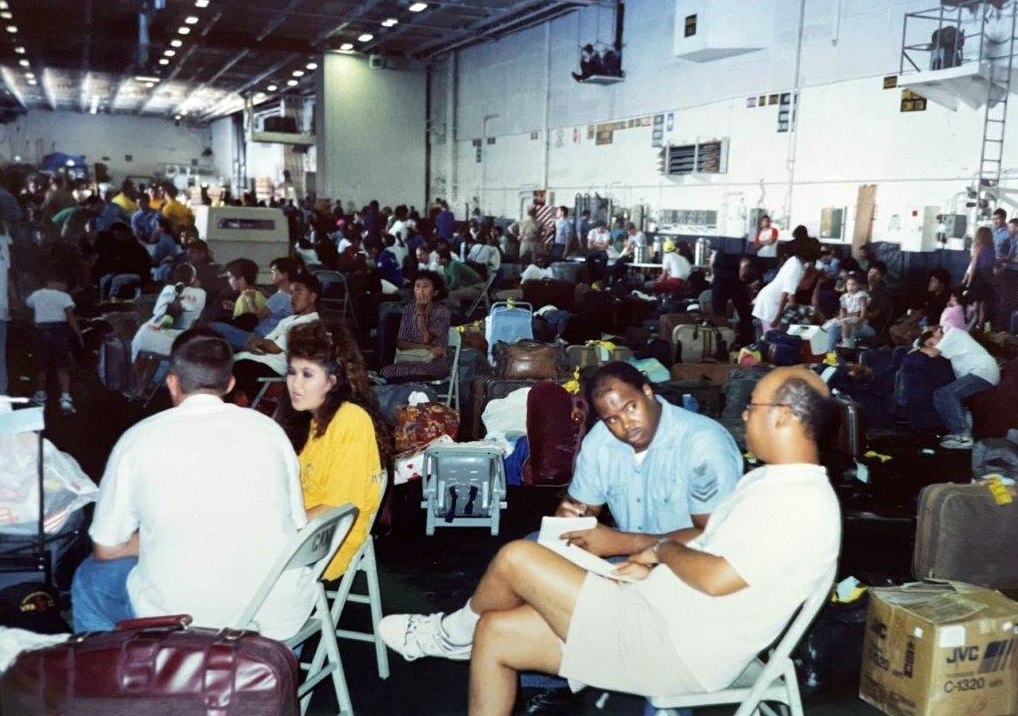
VIETNAM WAR LINEBACKER I and COMBAT ACTION RIBBON: During my first commissioned tour as First Lieutenant onboard USS Eversole (DD-789) during the ship’s 1972 WESTPAC cruise, we operated off the coast of North Vietnam, providing gunfire support missions. I was also the Gunfire Liaison Officer (GLO) for General Quarters (GQ) in the Combat Information Center (CIC), working comms between the CIC, the Bridge, the Fire Control Computers, Gun Mount Directors, and Gun Mount Captains. During one of our LINEBACKER missions, on August 25, 1972, North Vietnamese shore batteries opened fire on the ship, with many rounds just missing the ship, including water splashing over the hull. Fortunately, Eversole was not hit.
FIVE DETERRENT FBM POSEIDON MISSILE PATROLS: While serving onboard USS George Bancroft (SSBN-643) Gold Crew, initially as Diving Officer and later as Officer of the Deck, I made five Deterrent Patrols. On my final deployment, Bancroft was required to conduct the first-ever SUBSAFE Certified Nuclear Submarine Extended Refit Period overseas. Following the two-month refit period, extensive SUBSAFE work, including installation of hull-stiffeners, had been made. We were then required to make a subsequent dive to test depth to validate the quality of the work performed during the extensive refit period. A dive to test depth is a very stressful and tense evolution. One of the highest-risk maneuvers for a submarine to make sense of any problem at such depths is generally unrecoverable. Our dive-to-test dept was also on the heels following the loss of all hands when two other submarines, the USS Thresher and USS Scorpion, were lost at sea.
OPERATIONS DESERT SHIELD AND DESERT STORM: While serving on USS Abraham Lincoln (CVN-72) from August 1990 to May 1992, the ship began its work-ups and carrier qualifications for the Air Wing in preparation for its subsequent deployment to the Indian Ocean in support of both operations.
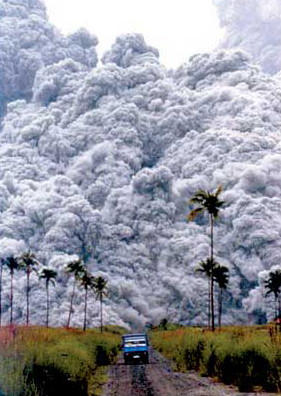
OPERATION FIERY VIGIL: On June 15, 1991, Mount Pinatubo erupted in the Philippines. It was the 2nd largest volcanic eruption in the 20th century. I served aboard USS Abraham Lincoln (CVN-72) as the ship’s and battle group’s Supply Officer. The day following the eruption, Lincoln was tasked to evacuate 4,500 military personnel, their dependents, and pets from Subic Bay, Philippines, to Cebu, Philippines, so they could then be evacuated back to the U.S. via USAF Military Airlift. This necessitated two separate runs and proved incredibly challenging as the ship had no baby food or diapers for the infants nor feminine hygiene products for the two two-day runs between Subic and Cebu. A Filipino baby was born on the ship during one of Lincoln’s runs to Cebu. The baby was named Abraham Valencia Pineda after the ship’s namesake. Compounding the challenge was finding sufficient sleeping quarters for the dependents. The solution is to have the crew vacate large berthing compartments, accept a 6-foot piece of bubble wrap, and find alternative sleeping areas in their workspaces. All this while simultaneously trying to “top-off” shipboard supplies and spare parts for our operational deployment into the Indian Ocean immediately following Desert Storm.
OPERATION JOINT ENDEAVOR and OPERATION JOINT GUARD: On June 9, 1995, I assumed command of the Defense Contract Management District International (DCMDI), where I was responsible for the contract administration of the U.S. Army’s Contingency Logistic Civil Augmentation Program (LOGCAP) supporting the NATO-led multinational peacekeeping force in Bosnia and Herzegovina under the Dayton Peace Accords. This necessitated several trips to Bosnia, Croatia, and Serbia, where I had staff and several offices in the region overseeing Brown & Root, the Army’s LOGCAP contractor.
Did you encounter any situation during your military service when you believed there was a possibility you might not survive? If so, please describe what happened and what was the outcome.
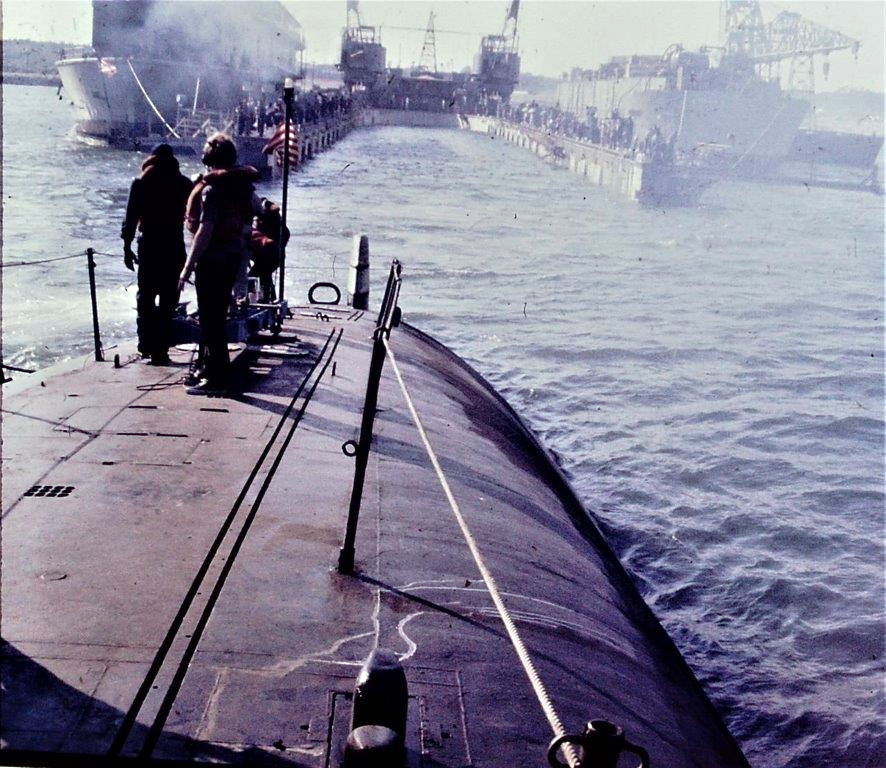
There were two very emotional and stressful situations.
The first occurred while serving onboard the old WWII Destroyer, USS Eversole (DD-789), during Linebacker I, gunfire support missions off the coast of North Vietnam. I was assigned as the Gunfire Liaison Officer (GLO) during General Quarters (GQ). The GLO operates out of the Combat Information Center (CIC) and is the central point of communications in CIC on the network with the Bridge, the Gunfire Control Center, the Gunfire Support Director, and each of the two Gun Mount Captains. In the early morning hours of August 25, 1972, after firing our designated and pre-planned targeting package assigned to North Vietnamese coastal targets, we commenced our withdrawal from the coast only to become under direct hostile fire from North Vietnamese shore batteries. The Captain on the bridge, the Fire Control Director, and both Gun Mount Captains, the only ones with eyes outside the hull, began reporting incoming rounds exploding all around the ship. Some of them splashing white-water over the hull. The Captain then released the Aft Gun Mount Captain to take manual control and “fire-at-will” at the shore batteries. It was especially tense and stressful for those on the network who could hear and realized the ship itself was now under attack and taking direct incoming hostile fire. There was nothing anyone could do but hope and pray that Eversole would not be hit as some other ships had been. Fortunately, we eventually got out of the range of the shore batteries and able to stand down. Eversole was awarded the Combat Action Ribbon for duty when under direct hostile fire on August 25, 1972.
The second event occurred just four years later while serving onboard the FBM Submarine USS George Bancroft (SSBN-643) Gold Crew. In June 1976, Bancroft had just completed the Navy’s very first-ever two-month SUBSAFE Certified Nuclear Submarine Extended Refit Period (ERP) in Rota, Spain. The work packages included much SUBSAFE work, including the placement of hull stiffeners. Upon completion of the ERP, Bancroft was required to do a dive to “Test Depth” to test the validity and quality of the SUBSAFE work packages. A dive to test depth is a highly stressful maneuver, as any casualty at those deep depths would generally be unrecoverable. This dive was shortly after the loss of all hands onboard the submarines USS Thresher (SSN-593) and USS Scorpion (SSN-589) in 1963 and 1968, respectively—something fresh on every crewman’s mind. A dive to Test Depth is perhaps the single most dangerous evolution a submarine can do, so the stress level and tension in the crew were extremely high. Even the slightest problem can result in catastrophic, unrecoverable loss. Fortunately, the dive to Test Depth was a success, with everyone breathing a big sigh of relief after completion.
Of all your duty stations or assignments, which one do you have fondest memories of and why? Which was your least favorite?
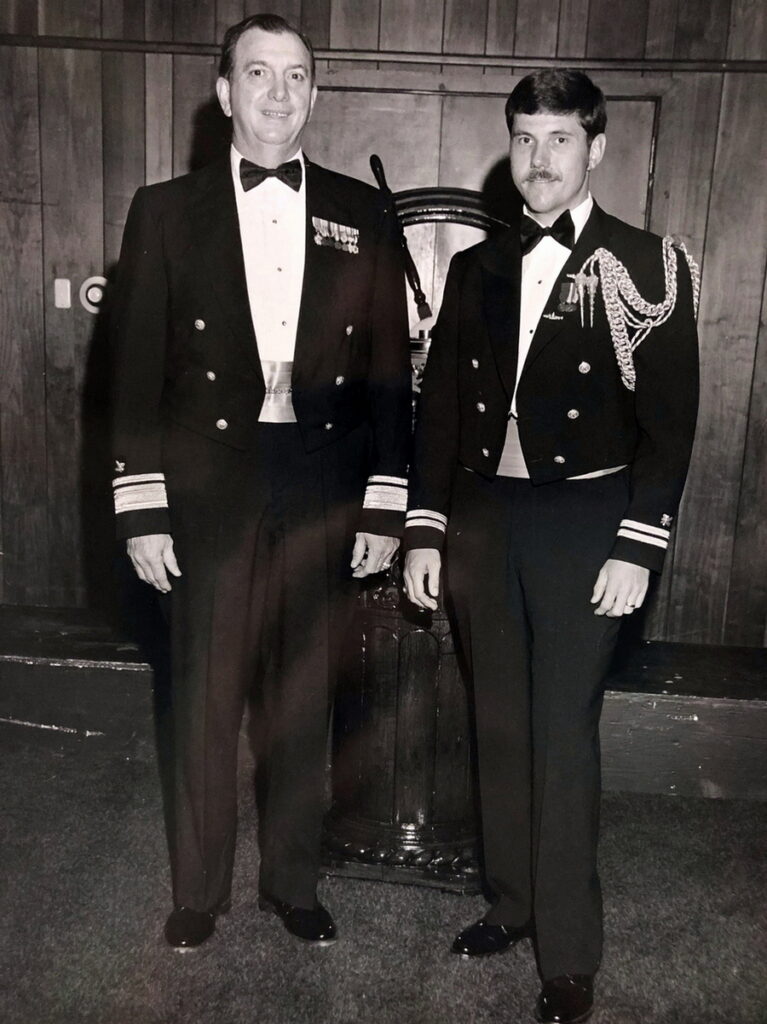
This is a particularly difficult question to respond to as I have so many fond memories of all my duty assignments. My first enlisted tour at NAVTRANSCO, NAS Alameda, CA, was especially memorable as I advanced from E-2 to E-5. I was very proud and very fond, to this day, of my advancement to Storekeeper Second Class and when I became eligible to use the “Acey-Duecy” Club at Alameda. The Acey-Duecy Club was exclusive to E-5s and E-6s and a cut above the all-hands Enlisted Clubs. For a young boy out of the Heartland of America, this was a mega accomplishment and one I am so very fond of. I wore that White Hat uniform with my E-5 stripes with special pride, perhaps the proudest of all my promotions.
My first commissioned tour as an Ensign on USS Eversole (DD-789) with a WESTPAC deployment off the coast of North Vietnam was also special. I was fortunate to be responsible for the Deck Division and serving with the Boatswain Mates (BMs). BMs are one of the oldest rates in the Navy, and I learned so much about naval customs and traditions from them. Perhaps because I was a Mustang, I had a special rapport with my Boatswain Mates. When I detached from the ship, the Division presented me with a specially made neck lanyard and Bosun’s Pipe, a treasure I proudly display to this day.
The Navy submarine forces are also a truly unique community within the Navy, and only a few ever have the opportunity to experience them. I was so fortunate to have qualified to wear gold Dolphins. I made five FBM Deterrent Missile Patrols on USS George Bancroft (SSBN-643) Gold Crew, where the camaraderie was especially high. And then, to be able to qualify as both a Diving Officer of the Watch and Officer of the Deck and be responsible for diving, surfacing, and driving around a nuclear submarine. This was an incredible responsibility for a young man in his 20s and an incredible experience and memory to top.

I can never forget being a Flag Aide at the Ships Parts Control Center (SPCC) in Mechanicsburg, PA, for two exceptionally fine flag officers. RADM Tom Allshouse was a very senior officer, mentor, and long-time friend. I learned so much from him early in my career about leadership and responsibility. He and his wife, Elsie, adopted me into their family and had a major influence on my career. From them, I learned that a career in the Navy did not only have to be about work but also could be a life one could enjoy and have fun doing.
Being the Supply Officer of the Navy’s newest aircraft carrier, at the time, the USS Abraham Lincoln (CVN-72) was a tremendous responsibility and accomplishment. It is the pinnacle of afloat duty assignments for Supply Corps officers, and there are only 12 of those coveted billets. To be selected as the Supply Officer of the Navy’s newest and most advanced warship, with over 5,500 personnel in the ship’s company and Air Wing, is an experience that is impossible to forget. Especially since during this tour, I was responsible for the readiness and support of the Air Wing and all the logistic requirements to support Operation Fiery Vigil and the humanitarian evacuations from the Philippines.
Perhaps the epitome of my career was earmarked when I assumed Command of the Defense Contract Management District International (DCMDI), with 57 offices spread across 23 countries. Command of a major shore establishment with so many overseas offices was one of the most unique experiences I could have ever imagined when my career began three decades earlier. Especially since it came to mark the culmination of my 33-year career, it truly is also one of my most fondest memories.
So, regarding my fondest memories and/or favorite duty stations, I could not possibly narrow it down to just one. They all were outstanding. There was something special about all of them. They all were especially rewarding with incredible fond memories, hence there were no “least favorites”. I loved my career in the Navy and would replicate it exactly as it turned out. I would not change a thing. I would do it all the same way again.
From your entire military service, describe any memories you still reflect back on to this day.

There are just too many to even begin to identify and describe. I was assigned to so many great billets and had so many great experiences. I will never forget:
- Graduating as Class Honor Man, standing 1 of 51 in Storekeeper “A” School
- My promotion to Storekeeper Second Class and entitlement to use the Acey-Duecy Club
- Being selected for the highly competitive Enlisted to Officer “NESEP” Program
- Earning a Bachelor’s Degree in Mechanical Engineering from the University of Nebraska
- Being assigned First Lieutenant on an old WWII Destroyer and working with Boatswain Mates
- Being accepted to transfer from the Unrestricted Line to the Supply Corps
- Serving on a nuclear FBM submarine making five-FBM Deterrent Poseidon Missile Patrols
- Serving as Flag Aide to two wonderful Flag Officers
- My early promotion to Lieutenant Commander, one year ahead of my peers
- Assignment to my first of two overseas assignments in Yokosuka, Japan
- Selected by the CO and Admiral to be Officer-in-Charge of Task Force 70 Det in Diego Garcia.
- Serving as the Supply Officer for the Navy’s newest Aircraft Carrier, USS Abraham Lincoln (CVN-72)
- Given command of major shore establishment, DCMDI, with 57 offices in 23 countries
- Culmination of a 33-year career with a formal retirement and change of command ceremony
In each assignment, I met and worked with so many wonderful shipmates with so many fond memories. Each of these are truly retained in my memory bank and will never be forgotten.
What professional achievements are you most proud of from your military career?
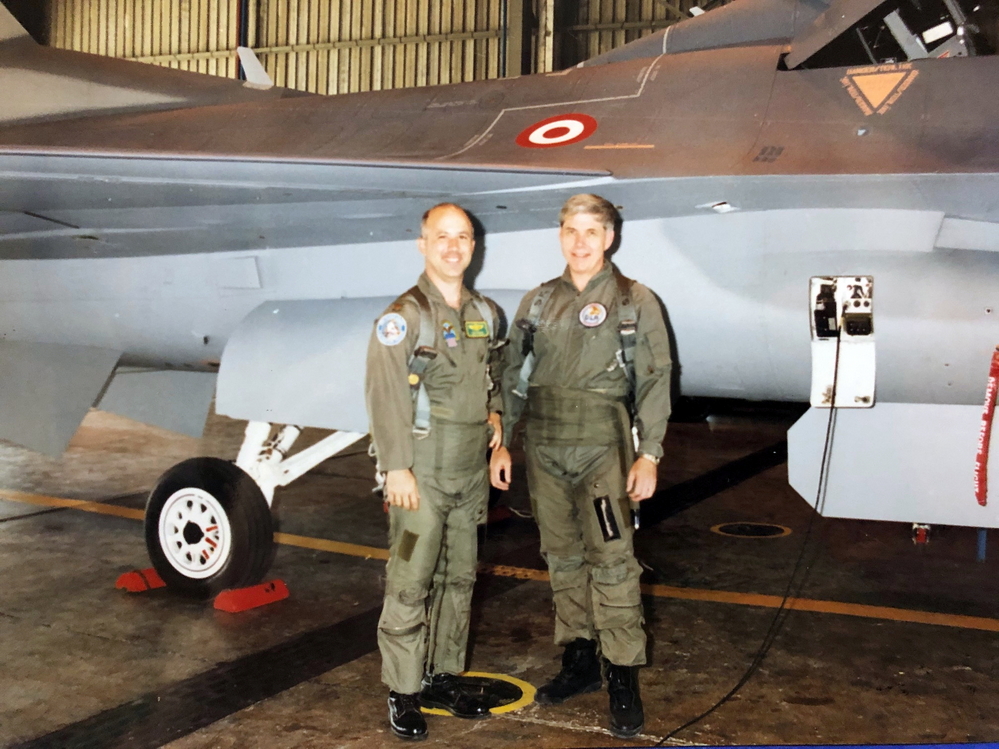
Again, there are just too many accomplishments and achievements to do them all justice. Some of the most memorable that I am especially proud of, especially at the time they occurred, spanning my first enlisted tours to retirement as a Captain:
- Recognition as Class Honor Man at Storekeeper “A” School, graduating 1 of 51
- Advancement from E-1 to E-5, without waivers, in less than two years
- Selection into the highly competitive Enlisted to Officer “NESEP” Program
- Graduating with Honors from the University of Nebraska with a BSME degree
- Earning a Commission as an Ensign in the Unrestricted Line (1100 Designator)
- Qualifying as Officer of the Deck (OOD) and Command Duty Officer (CDO) of surface combatants
- Graduating with Honors from the Supply Corps School
- Qualifying in submarines, earning gold dolphins
- Becoming a Diving Officer of the Watch and Officer of the Deck (OOD) on a nuclear submarine
- Early promotion from Lieutenant to Lieutenant Commander, one year ahead of peers
- Being selected for the coveted and highly competitive Carrier Supply Officer Sea Slate (CVN-72)
- Assignment to Command major shore establishment (DCMDI)
- Making an orientation flight in the back seat of a USAF F-16 with Turkish markings
- Visiting the Peace Hut at Panmunjom on the border of North and South Korea
- Serving on four ships: one WWII Tin Can, one Nuclear Submarine, and two Aircraft Carriers
Of all the medals, awards, formal presentations and qualification badges you received, or other memorabilia, which one is the most meaningful to you and why?
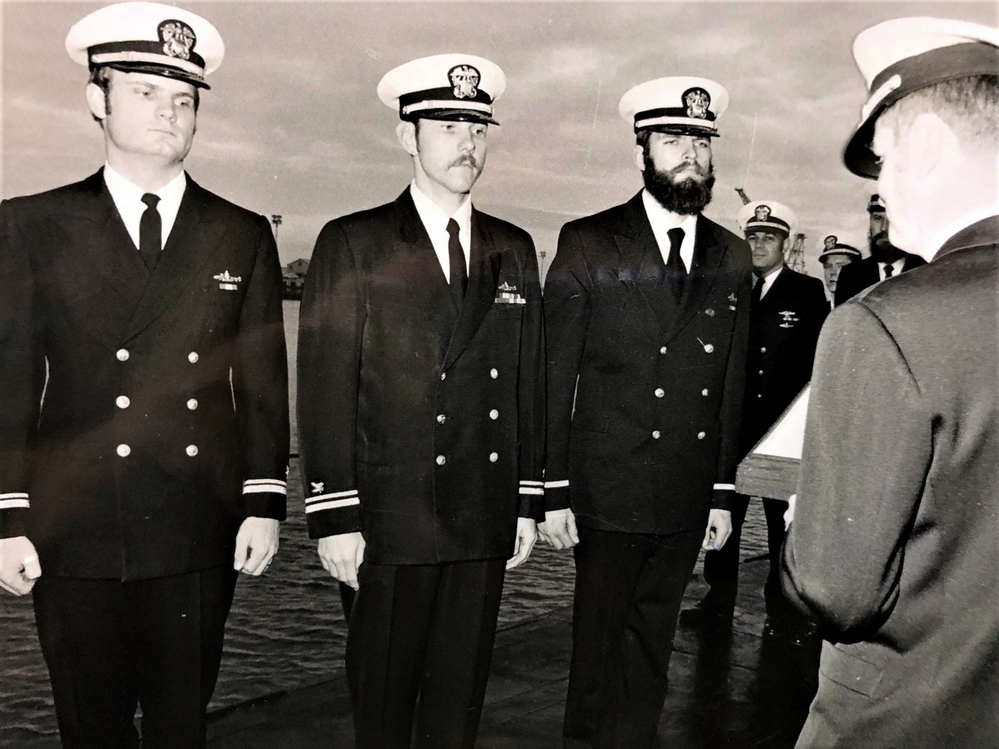
Again, it is impossible to single out one award or qualification that is more meaningful than another. Some of the highlights certainly include:
Becoming qualified as an Officer of the Deck (OOD) for both Independent and Fleet operations as well as Command Duty Officer onboard the USS Eversole (DD-789), the only Ensign the Captain qualified.
Being presented a hand-tied, macrame neck lanyard and engraved silver Bosun’s Pipe by my Deck Division when detaching from USS Eversole (DD-789)
It was also a similar honor qualifying in submarines as well as qualifying as both a Diving Officer of the Watch and Officer of the Deck (OOD) on a nuclear submarine USS George Bancroft (SSBN-643) Gold Crew.
Perhaps the epitome of all qualifications and badges earned was wearing the Command Ashore Badge for command of the Defense Contract Management District International, with 57 offices across 23 countries.
Receiving a framed “Don’t Tread on Me” flag upon retirement from the U.S. Navy.
Which individual(s) from your time in the military stand out as having the most positive impact on you and why?
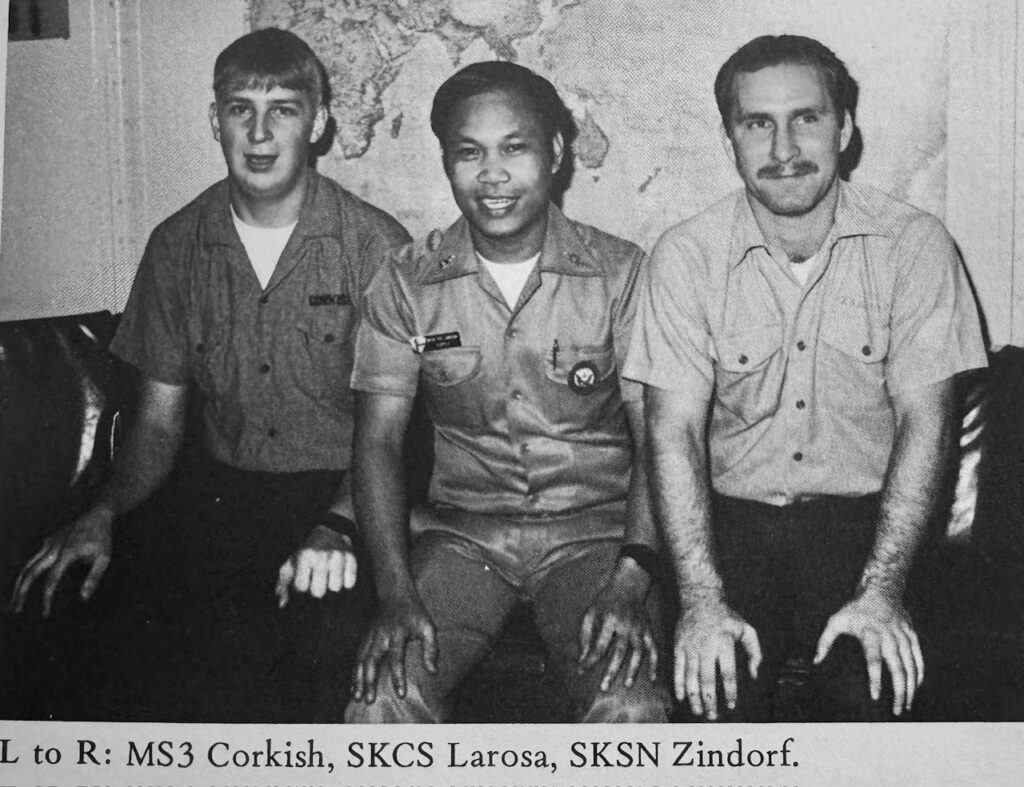
Throughout my 33-year, several individuals had a very positive influence and impact on my career, helping to shape my values. I am thankful to each for having had the privilege of calling them shipmates.
- Storekeeper Chief Potter: SKC Potter was my LCPO at NAVTRANSCO, NAS Alameda. He took an active interest in my professional development. He encouraged me to complete all the advancement courses and practical factors necessary for advancement and was instrumental in my promotions from E-2 to E-5 in less than two years. He also encouraged me to apply for the Enlisted to Officer NESEP Program, which I was accepted into. Chief Potter set a great example for me of what leadership was all about.
- CDR D. W. “Dave” Farnham: CDR Farnham was my Commanding Officer on USS Eversole (DD-789). He was tough, demanding, and always professional. While many thought he was too hard on the crew, I found him to set high standards with high expectations. Something I admired. It was from him I learned how to develop an “eagle’s eye” during zone inspections to see and identify deficiencies and then to take action to remediate them. I was also the only Ensign onboard of the seven assigned that he nurtured and qualified as Officer of the Deck (OOD) for both Independent and Fleet Operations as well as Command Duty Officer. I admired his absolute professionalism and the high standards he set.
- Boatswain Mate First Class Lamoine Partee: BM1 Partee with the Leading Petty Officer onboard USS Eversole (DD-789). Partee was a Boatswain’s Mate, Boatswain Mate. He was the classic BM with his “Popeye” like forearms and absolutely perfect White Hat uniform he always wore with pride. His brother was Dennis Partee, the Kicker and Punter for the San Diego Chargers. Lamoine himself was just as accomplished and was the “Bolo” Throwing Champion of the entire Pacific Fleet. Throwing the bolo is one of the essential responsibilities of Boatswain Mates. Partee led the Division with absolute fairness with the right balance of discipline. He was a model old-school White Hat, a Sailor’s Sailor, and someone I truly admired.

- LT J. W. “Jim” Metzger. LT Jim Metzger and I served onboard USS George Bancroft, making five FBM Poseidon Missile Patrols together. We also earned our Dolphins at the same time. I was the Supply Officer, and Jim was the Main Propulsion Assistant (MPA). Jim was also a Naval Academy Graduate and was nuclear-trained and qualified. Jim and I shared the same stateroom, he on the top rack, I on the bottom. He literally would sleep with the Reactor Control Manuals (RCMs) during heavy seas instead of putting up the sissy bars to keep from rolling out of his rack. He would place the thick RCMs under the inboard side of his mattress to accomplish the same thing. Jim was a Nuke’s Nuke. He took his job seriously and subscribed to working hard and playing hard. He was one of the most professional officers I had the pleasure of serving with, demonstrating how important it was to “really know your stuff.” Jim went on to get command of his own boat, the USS Minneapolis-St. Paul rose to the rank of Vice Admiral. Jim is one of the most respected and accomplished officers I have ever served with. I enjoyed his friendship and our camaraderie.
- RADM T. J. “Tom” Allshouse. I was Admiral Allshouse’s Flag Aide from 1977 to 1979 while assigned to the Ships Parts Control Center. Admiral Allshouse was not only a mentor but also a friend. Our friendship extended well beyond our time serving together. He and his wife set a wonderful example of how senior officers can not only be senior leaders but also demonstrate a “down-to-earth” warmth with concern and compassion for those they lead. Admiral Allshouse was especially knowledgeable about the Navy Supply Corps, and I learned so much from him. He was well respected within the Supply Corps community and a great role model. He had a profound influence on my positive attitude toward the Navy and making it a career.
- Professor D. V. “Dave” Lamm: Professor Lamm was the Acquisition Chair, Graduate School of Business & Public Policy at the Naval Postgraduate School in Monterey, CA. Dave was my Thesis Advisor and taught the principal contracting and acquisition management courses for the Masters Program I was enrolled. Dave also was a career naval officer with a PhD. He was the best instructor I ever had in all my graduate and post-graduate studies. He was an expert in his field and sought after as a speaker or subject matter expert. He was a consummate teacher: passionate, tough, demanding, and totally focused on his student’s learning and understanding of the subject matter. He was also open, friendly, and personable and truly cared about each student and the student’s welfare. An absolute professional. In all my academic years of studies and courses attended, I would rank Dave as number 1. A true role model.
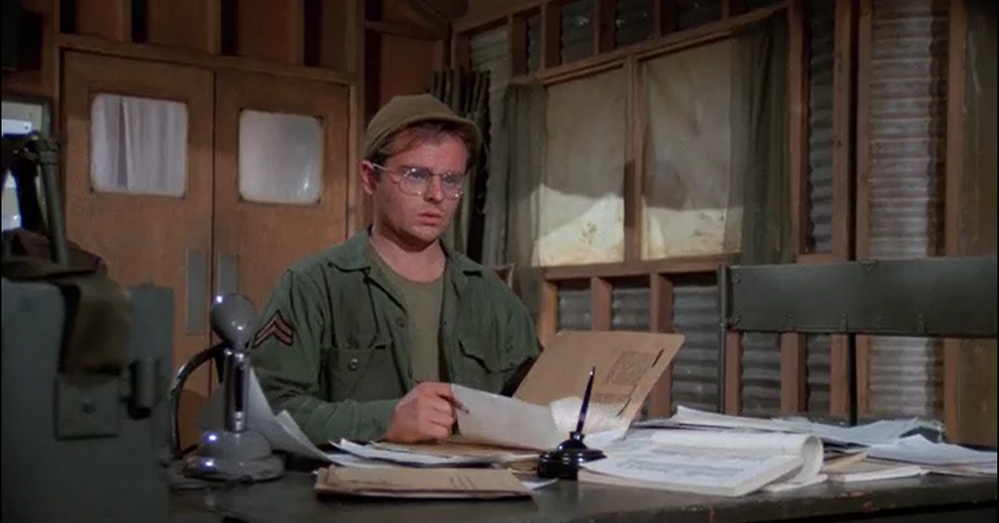
- Mess Management Specialist Third Class R. “Bob” Corkish: Even though MS3 Corkish was a Mess Management Specialist, we assigned him as our Supply Department Yeoman when I was assigned as the Assistant Supply Officer on USS Midway (CV-41) 1983-1984. As the Assistant Supply Officer, I was responsible for the administration of the 600-man Supply Department, the largest on the ship. Petty Officer Corkish was our “Radar O’Reilly” from the TV series MASH. As a junior enlisted, he had a phenomenal work ethic and was always responsive, no matter the task. He always seemed to be one step ahead and always delivered on time and exactly what was needed. He had a total commitment to getting any task done. A true professional.
- RADM J. D. “Bear” Taylor: Admiral Taylor was a war-fighter’s war-fighter out of the General George S. Patton style of leadership. I was fortunate to have served with him as his Supply Officer when he was Commander of Light Attack Wing Pacific at NAS Lemoore, CA. In 1987, as we were transitioning from the A-7 to the F/A-18 Strike Fighter, Admiral Taylor led from the front. He was always approachable and fostered a special esprit de corps with his aviators, officers, and staff. It was not only a pleasure to work for him but also very satisfying, as the pride and respect he showed for the men and women in his command was self-evident. He knew what it took to be successful.
- MG R. W. “Bob” Drewes, USAF: General Drewes was the Commander of the Defense Contract Management Command (DCMC). He was my immediate superior when I commanded DCMDI, one of his four subordinate commands. General Drewes was an absolute professional. He set the highest standards not only of himself but his expectations for those in his command. DCMC was a “joint service” command where the Army, Navy, and Air Force worked side by side. General Drewes demonstrated a true “purple” approach to leadership, treating each officer the same, regardless of service affiliation. He was process-oriented, always approachable, and understood what it took to exceed our customer’s expectations. I found General Drewes to be one of the best flag officers from any of the branches of the armed forces I had the pleasure to ever work for.
Every one of these individuals had several things in common. Absolute Professionalism. Each had an intense sense of duty, a focus on quality, and a commitment to always doing “the right thing.” Traits and values I admired. Traits and values I strove to emulate. I am thankful for having had the privilege of having served with each and every one of them and calling each one a “shipmate.”
List the names of old friends you served with, at which locations, and recount what you remember most about them. Indicate those you are already in touch with and those you would like to make contact with.
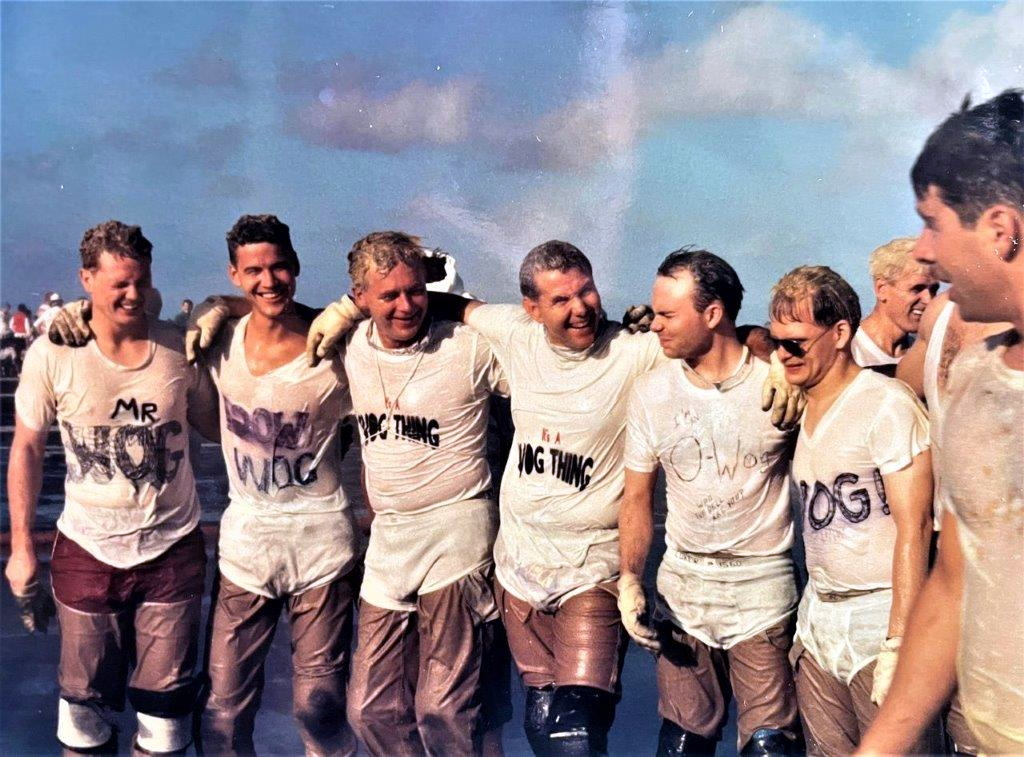
For those in the Navy, there is no tribute finer than calling an old friend “your shipmate.” It is an expression of camaraderie, trust, and mutual respect. Someone who you shared hardships and joys with. A “brother from a different mother”. There are just way to many “shipmates” that I served with over my 33-year career to even begin to mention one. Many whom I have remained in contact with and others whom I have lost contact with over the many years of changing duty stations and deployments. So many memories. So many shipmates.
Can you recount a particular incident from your service which may or may not have been funny at the time but still makes you laugh?
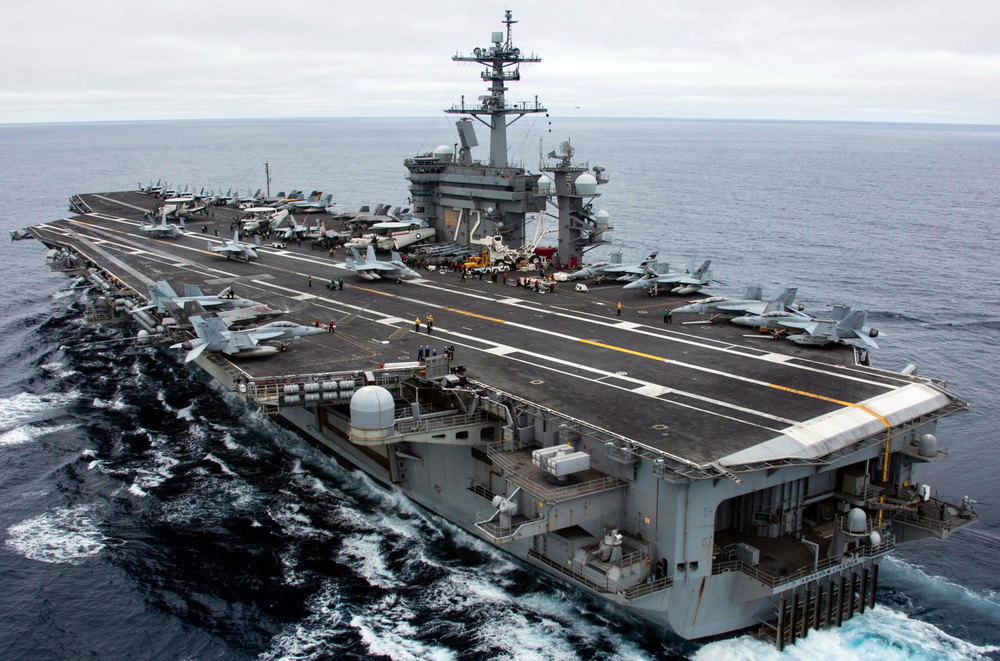
While aboard USS Abraham Lincoln (CVN-72), upon the very day of our return to our home port at NAS Alameda after completing our Indian Ocean cruise, my Principal Assistant for Logistics (PAL), LCDR Jerry Twigg, decided to launch his boat at the marina very near the head of the pier. After the homecoming ceremony and all the crew members with family and others had departed the ship, Jerry, a bachelor at the time, decided to take his boat out on the bay to relax. He backed his truck with the boat trailer down the boat ramp and got out to launch his boat. Unfortunately, the brake was not well set, and the truck continued down the ramp along with the boat. Clearly, it didn’t matter to the boat, but trucks don’t float. While clearly, this was not a funny incident at the time, especially for Jerry, as time went on, it became a big point of laughter. Jerry and I were good friends, and I count him as a true “shipmate,” and we still stay in touch to this day.
What profession did you follow after your military service, and what are you doing now? If you are currently serving, what is your present occupational specialty?
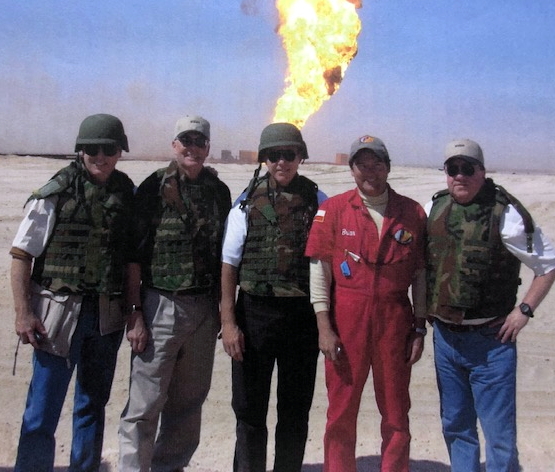
Upon retirement, I went to work for Brown & Root in Houston, Texas. Brown & Root was one of the top Engineering and Construction companies in America and was the incumbent U.S. Army LOGCAP contractor supporting military contingencies around the world. From my military career, I had a lot of deployed and international experience that aligned nicely with the company. Due to potential conflicts of interest, I was precluded from working with or on the LOGCAP contract, which was not a problem because the company was so big. I retired in the summer of 1998 and immediately went to work for Brown & Root in Houston, TX. A month after I started work, I was deployed to Tegucigalpa, Honduras, following the devastation caused by Hurricane Mitch. So, my international experience proved beneficial from the git-go.
Brown & Root, which was owned by Halliburton, had then acquired M. W. Kellogg and became better known as KBR. Our business unit was then relocated from Houston to Arlington, VA. In January 2003, I was serving as the Corporate Vice President for Strategy and Marketing when I was tasked to deploy as the Senior Corporate Officer to Kuwait for the big KBR ramp-up to support the U.S. Army and forces deploying to the Gulf in preparation for the 2003 invasion of Iraq. In 2004, I left KBR and formed my own company, Peregrine Development International, doing the same kind of work. In 2008, I relocated Peregrine from Kuwait to the Philippines, where I now reside. In 2008, Peregrine started the largest foreign land development project in the Philippines. Development of a 177-hectare green-field site into a modern logistics and business park with almost six million square meters of covered commercial, office, and warehouse space.
I retired from Peregrine in 2016, although I carry the role of “Founder” and past president and CEO. The experiences and training I obtained over my 33-year career serving in the Navy are directly attributable to my post-military career successes.
What military associations are you a member of, if any? What specific benefits do you derive from your memberships?
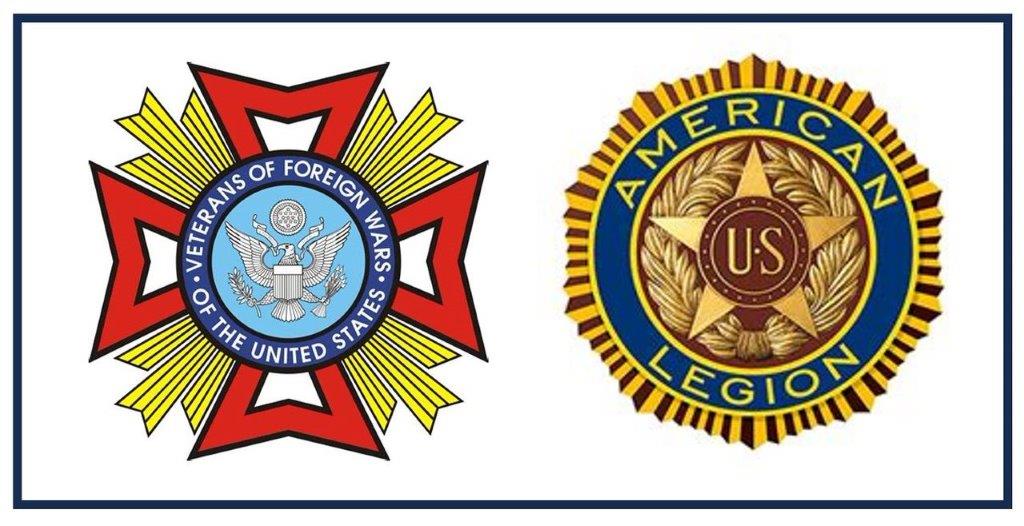
I am a life member of both the VFW and American Legion. I would encourage all veterans to join. Both organizations work hard to maintain and improve the benefits pledged by our government to veterans.
In what ways has serving in the military influenced the way you have approached your life and your career? What do you miss most about your time in the service?

The military is an excellent proving ground for young men and women who are looking to get started in the world. While the military may not be for everyone, and it is certainly not perfect, it strives to be and has come a long, long way. Each and every year, it gets better and stronger. The military teaches a broad range of skills and how to use them. It helps individuals to become flexible and able to adapt to changing environments and circumstances. And perhaps more importantly, it teaches individuals how to lead while stressing accountability and responsibility. These traits and values have helped shape my career, considering I started as a young man, just out of high school, from the Heartland of America – – and without much of a rudder. Through hard work, patience, and perseverance, I advanced from a young E-1 Seaman Recruit fresh out of boot camp to an O-6 retiring as a Captain in the U.S. Navy.
During one’s military career, great and lasting friendships can be formed. The camaraderie is special. The memories are even more so. But like all things in life, it depends on one’s attitude and what one wants to make of the opportunities presented.
Based on your own experiences, what advice would you give to those who have recently joined the Navy?

Be patient. Like all things, no matter the career path one takes, it takes patience. No one starts as the CEO of a company or an Admiral. It is a long journey, no matter the career path chosen. There are ups and downs. There are sacrifices and joys. It also takes a positive attitude to always do one’s best and to always move forward. Accept setbacks, work hard, and the rest will come in due time. Patience is essential.
In what ways has togetherweserved.com helped you remember your military service and the friends you served with.
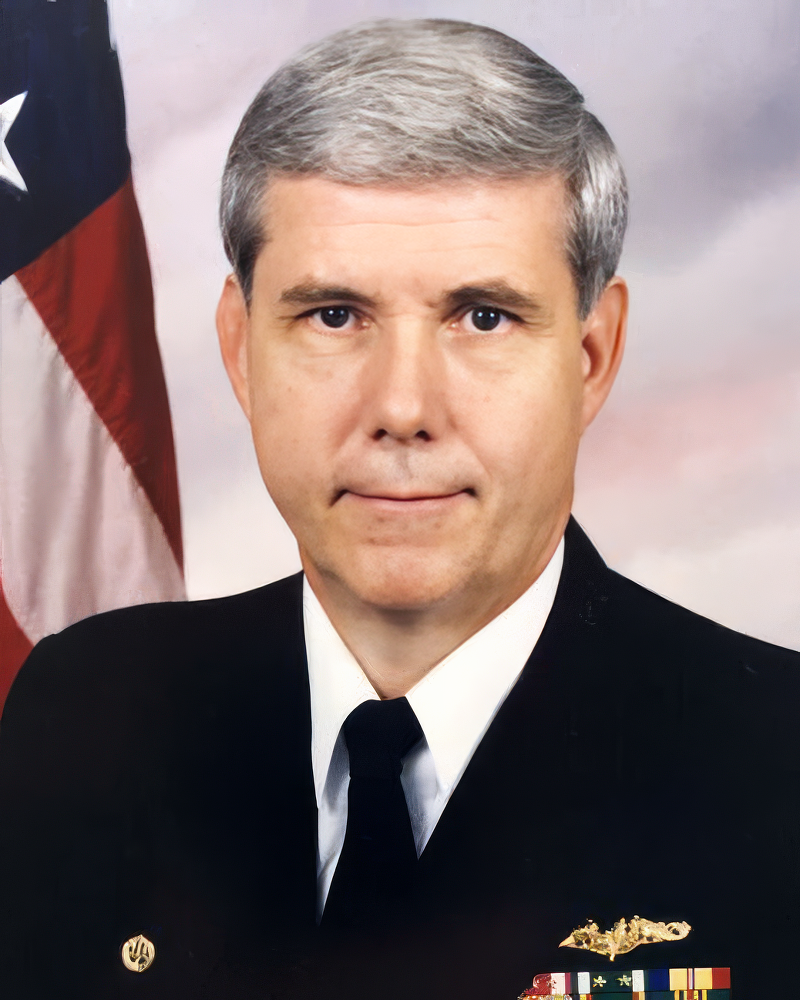
I have found TWS to be one of the best websites for all military who desire to document and archive their time in the service and the ability to then provide a Shadow Box of one’s career. One very beneficial feature is the ability to reconnect with former shipmates and friends. Nostalgia may not be so important to those younger. However, I have found, as I have aged, that it is fun to remember times past, and TWS is a big help in doing just that as one sees and reconnects with others.
PRESERVE YOUR OWN SERVICE MEMORIES!
Boot Camp, Units, Combat Operations
Join Togetherweserved.com to Create a Legacy of Your Service
U.S. Marine Corps, U.S. Navy, U.S. Air Force, U.S. Army, U.S. Coast Guard
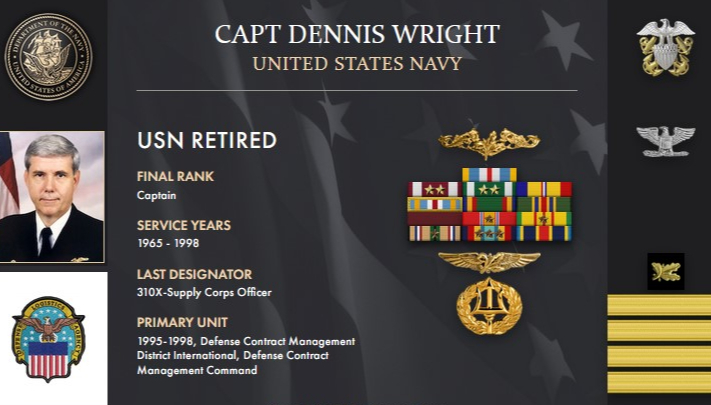
0 Comments